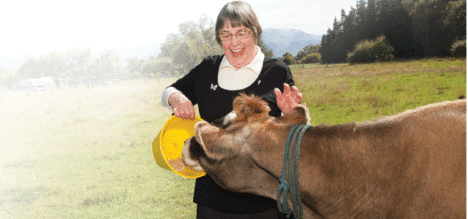
It was a celebration of new life that ended in a tragic death. Fitria Lestari had given birth to a son one month earlier and her family gathered to welcome him to the world. The relatives ate, chatted . . . and smoked. According to Australia’s ABC, which reported on the story, about 65 per cent of Indonesian men smoke, with apparently blithe disregard for the consequences. (World Bank figures suggest the numbers are as high as 76 per cent.) Lestari and her husband begged their relatives not to smoke near the baby, but their concerns were waved away. After just five minutes of exposure to second-hand smoke, little Hafizh was having trouble breathing. The party was broken up as the one-month-old was rushed to hospital. After 10 hours, during which medical staff worked to stabilise him, the worst seemed to be over.
“They said his condition was improving and he was moved into the ward,” said Lestari, “but then he started declining. He was coughing, his pulse was getting weaker and weaker . . . the doctor asked us to pray for him. I had to give up on him. I said to him, ‘My dear baby, you may go if you want to go; Mum and Dad were pleased with you.’ And then he was gone.”
Many Western countries are slowly but surely winning the war against tobacco. StatsNZ reported in 2017, for example, that daily smoking among adults had declined to 14.2 per cent—the rate of weekly smoking among 15–17-year-olds is around 5 per cent.
Yes, tobacco companies are responding to these trends, but they’re not exactly shutting up shop.
Earlier this year, one of the world’s largest tobacco companies, Philip Morris, which owns the Malboro brand, announced plans to phase out cigarettes in favour of alternative products, including e-cigarettes
. . . but with no timetable and only in the UK where they hold a relatively small market share. “Why not the company’s home market of the US?” asks MediaPost’s Sean Hargrave. “Could it just be that Marlboro is the leading brand in the US and sells more than the next eight leading brands combined?”
Meanwhile in India, a Facebook ad recruits promotional staff to give out free cigarettes in nightclubs: Hey girls . . . We are searching A++ Hot & Gorgeous girls for the Marlboro pub activity . . . . Pay: 2000/day . . . The ad was spotted by Reuters journalists who uncovered a pattern of illegal promotional activities by Philip Morris India and other cigarette companies.
Similarly, in Indonesia, tobacco advertising is everywhere. According to the ABC, multiple houses in a Yogyakarta suburb have been painted in a giant community mural—advertising Philip Morris cigarettes. This is the country that shocked the world with a viral YouTube video in 2011 that depicted a chubby two-year-old, Ardi, puffing away contentedly on cigarettes, expertly tapping off the ash and lighting his next cigarette from the remains of the last. At that time, he had a 40-a-day habit. Seven years and 33.5 million YouTube views later, however, Ardi’s parents have helped him kick the habit and he’s happily enjoying school.
Lestari, mourning the death of Baby Hafizh, wishes the government would take stronger action on the issue. “The difficulty here is that so many things are sponsored by cigarette companies—like sporting events,” she said. “If the government can’t shut them down, then they should increase taxes so that cigarettes are very expensive.”
Across the developing world—Africa, Asia, Latin America and the South Pacific islands—Big Tobacco is doing its best to embed itself in the economy and culture. Populations there are growing and youthful; what tobacco companies consider an “emerging market”. The World Health Organisation (WHO) is projecting a massive increase in smoking rates in some African countries—if trends in Congo continue, for example, the nation’s 2010 smoking rate of 14 per cent will blow out to 47 per cent by 2025.
The results are more than developing countries can afford. “Tobacco not only impoverishes those who use it, it puts an enormous financial burden on countries,” says a WHO report. “The costs of tobacco use at the national level encompass increased health-care costs, lost productivity due to illness and early death, foreign exchange losses and environmental damage. . . . If current trends persist, about 650 million people alive today will eventually be killed by tobacco, half of them in productive middle age, each losing 20 to 25 years of life.”
What’s tragic about this is that it’s so unnecessary. The links between tobacco, disease and early death have been established for decades. And strategies for reducing smoking rates are also known and proven—higher taxes, age limits, awareness campaigns, smoke-free zones in buildings and enclosed public areas, advertising and sponsorship bans, plain packaging, health warnings on packs . . . Ironically, 2025—the year Congo is likely to see nearly half of its adult population smoking—is the same year New Zealand is planning to declare itself a smoke-free nation, which it defines as a smoking rate of less than five per cent. But Big Tobacco is quite prepared to exploit developing countries in the interests of their bottom line.
Even before Australia’s plain packaging regulations became law in 2012, tobacco companies began lawyering up. The Australian Government parted with tens of millions of dollars in legal fees, successfully defending the regulations in the High Court and then at international tribunals. But while a wealthy country like Australia has the resources to take on the likes of Philip Morris and British American Tobacco (BAT), smaller, emerging nations can much more easily be bullied. And that’s exactly what’s happening in a number of African nations, according to an investigation published by the Guardian. BAT, the world’s largest tobacco company (Dunhill, Lucky Strike), is leading the way in aggressive litigation and lobbying aimed at stopping at least eight countries from implementing tobacco control laws—higher taxes, health warnings on packs, limits on advertising. On top of this, BAT is accused of deliberately targeting children in its sales strategies and bribing government officials to achieve commercial advantage.
“If current trends persist, about 650 million people alive today will eventually be killed by tobacco, half of them in productive middle age, each losing 20 to 25 years of life.”
But it’s not all doom and gloom in the developing world. Sri Lanka is one country that has made huge strides in implementing effective tobacco controls over recent years. Under the leadership of reform-minded leftist president Maithripala Sirisena, tobacco excises have been boosted, cigarette advertising is banned, health warnings now cover 80 per cent of the surface of cigarette packs, public and enclosed spaces have been declared smoke-free and government officials have shown a willingness to go toe-to-toe with Big Tobacco lawyers in the nation’s courtrooms.
“As we know from long experience, the tobacco industry often distorts and challenges the best scientific knowledge,” said President Sirisena in a keynote address to representatives of governments that have signed up to the WHO Framework Convention on Tobacco Control (FCTC). “We know that the industry will try to influence policymakers in many ways, often support petitioners to challenge government legislation and persuade the mass media . . . . We need not have any compromise of any kind with the tobacco industry.”
Four billion cigarettes were sold in Sri Lanka during 2016, according to Bloomberg. A year later sales had dropped by 200 million and the downward trend is projected to continue.
There are some indications that people—both adults and teens—are smoking less, but there are challenges, with higher cigarette prices prompting smokers to switch to hand-rolled traditional bidis and concerns that black market cigarette imports are increasing.
The battle for Sri Lanka is far from over, but worldwide it seems that the tide is turning in the war against tobacco. A 2017 WHO report indicates that, over the past decade, the number of countries implementing at least one best-practice tobacco control policy has risen from 42 to 121. “More than half of the top performers are low- and middle-income countries, showing that progress is possible regardless of economic status,” says the report. “[T]he number of people protected by at least one best-practice measure has quadrupled to 4.7 billion—almost two-thirds of the world’s population.”
In the meantime, parents and educators still have a responsibility to inform children about the risks of smoking. And health professionals, as well as community support organisations, need to continue walking alongside smokers in their journey towards a tobacco-free lifestyle.









